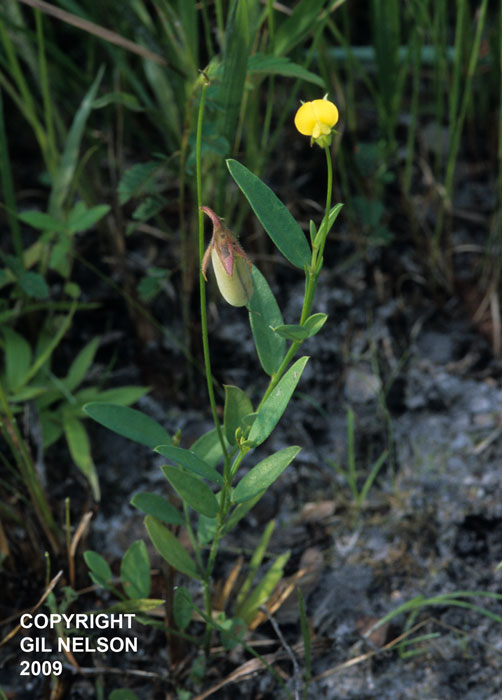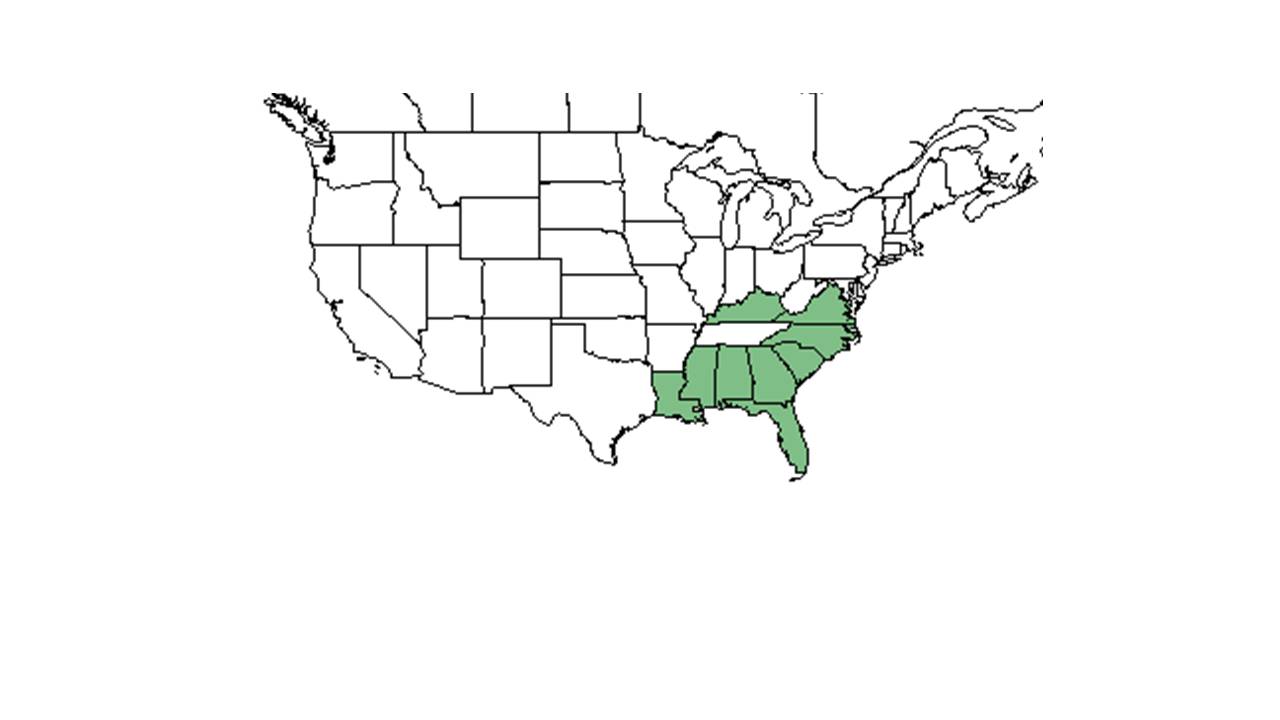Difference between revisions of "Cnidoscolus stimulosus"
(→Ecology) |
|||
| Line 27: | Line 27: | ||
Cnidoscolus stimulosus was found in sparsely canopied upland habitats that occur on deep, well drained, sandy substrate suitable for construction of Gopher tortoise burrows. Sandhill, maintained by frequent fires.<ref name="Mushinsky et al 2003">Mushinsky, H. R., Terri A. Stilson and Earl D. McCoy (2003). "Diet and Dietary Preference of the Juvenile Gopher Tortoise " Herpetologists' League 59(4): 475-486.</ref> Occur in dry flatwoods/sandhill.<ref>Glitzenstein, J. S., D. R. Streng, et al. (2003). [Abstract] Long-term seasonal burning at the St. Marks National Wildlife Refuge, north Florida: changes in the sandhill plots after 23 years. Second International Wildland Fire Ecology and Fire Management Congress and Fifth Symposium on Fire and Forest Meteorology, Orlando, FL, American Meteorological Society.</ref> Cnidoscolus stimulosus is a feature of sandhill communities with frequent occurrence in the understorey.<ref name="Stamp and Lucas 1990">Stamp, N. E. and J. R. Lucas (1990). "Spatial patterns and dispersal distances of explosively dispersing plants in Florida sandhill vegetation." Journal of Ecology 78: 589-600.</ref> | Cnidoscolus stimulosus was found in sparsely canopied upland habitats that occur on deep, well drained, sandy substrate suitable for construction of Gopher tortoise burrows. Sandhill, maintained by frequent fires.<ref name="Mushinsky et al 2003">Mushinsky, H. R., Terri A. Stilson and Earl D. McCoy (2003). "Diet and Dietary Preference of the Juvenile Gopher Tortoise " Herpetologists' League 59(4): 475-486.</ref> Occur in dry flatwoods/sandhill.<ref>Glitzenstein, J. S., D. R. Streng, et al. (2003). [Abstract] Long-term seasonal burning at the St. Marks National Wildlife Refuge, north Florida: changes in the sandhill plots after 23 years. Second International Wildland Fire Ecology and Fire Management Congress and Fifth Symposium on Fire and Forest Meteorology, Orlando, FL, American Meteorological Society.</ref> Cnidoscolus stimulosus is a feature of sandhill communities with frequent occurrence in the understorey.<ref name="Stamp and Lucas 1990">Stamp, N. E. and J. R. Lucas (1990). "Spatial patterns and dispersal distances of explosively dispersing plants in Florida sandhill vegetation." Journal of Ecology 78: 589-600.</ref> | ||
===Phenology=== <!--Timing off flowering, fruiting, seed dispersal, and environmental triggers. Cite PanFlora website if appropriate: http://www.gilnelson.com/PanFlora/ --> | ===Phenology=== <!--Timing off flowering, fruiting, seed dispersal, and environmental triggers. Cite PanFlora website if appropriate: http://www.gilnelson.com/PanFlora/ --> | ||
| − | + | It has three seeds fruit and produce seeds with elaiosomes”<ref name="Stamp and Lucas 1990"/> | |
| + | |||
===Seed dispersal=== | ===Seed dispersal=== | ||
===Seed bank and germination=== | ===Seed bank and germination=== | ||
Revision as of 11:03, 10 July 2015
| Cnidoscolus stimulosus | |
|---|---|

| |
| photo by Gil Nelson | |
| Scientific classification | |
| Kingdom: | Plantae |
| Division: | Magnoliophyta - Flowering plants |
| Class: | Magnoliopsida – Dicotyledons |
| Order: | Euphorbiales |
| Family: | Euphorbiaceae |
| Genus: | Cnidoscolus |
| Species: | C. stimulosus |
| Binomial name | |
| Cnidoscolus stimulosus (Michx.) Govaerts | |

| |
| Natural range of Cnidoscolus stimulosus from USDA NRCS Plants Database. | |
Contents
Description
Common Name: finger rot
Distribution
Ecology
It resprouts and flowers within two months of burning in the growing season.KMR“In all of these species, seeds are forcefully expelled after the fruit matures and dries. Three of the ballistic euphorbs (C. stimulosus, C. argyranthemus and S. sylvatica) produce seeds with elaiosomes and all of the ballistic species are collected by ants, in particular Pogonomyrex badius Latreille (Long and Lakela 1971; N.E. Stamp and J. R. Lucas, personal observation).” [1]
Habitat
Cnidoscolus stimulosus was found in sparsely canopied upland habitats that occur on deep, well drained, sandy substrate suitable for construction of Gopher tortoise burrows. Sandhill, maintained by frequent fires.[2] Occur in dry flatwoods/sandhill.[3] Cnidoscolus stimulosus is a feature of sandhill communities with frequent occurrence in the understorey.[1]
Phenology
It has three seeds fruit and produce seeds with elaiosomes”[1]
Seed dispersal
Seed bank and germination
===Fire ecology=== Are included in the flowering plant survery – post burn – in Heuberger’s study.[4] Cnidoscolus stimulosus was one of the plant species to increase abundance recovery post-fire in Rosemary scrub ecosystem.[5]Cnidoscolus stimulosus was one to resprout after burn after fire was reinstated into the ecosystem.[6]
Pollination
Use by animals
“Seeds were found in middens of harvester-ant nests of Pogonomyremex badius Latreille. In addition, seeds of all three plant species were observed being carried into the ant nests and then later deposited uneaten at the nest perimeter.”[1]Gopher tortoises (juveniles and adults) feed on Cnidoscolus stimulosus.[2]Included in gopher tortoises’ scat.[7]
Diseases and parasites
Conservation and Management
Cultivation and restoration
Photo Gallery
References and notes
- ↑ 1.0 1.1 1.2 1.3 Stamp, N. E. and J. R. Lucas (1990). "Spatial patterns and dispersal distances of explosively dispersing plants in Florida sandhill vegetation." Journal of Ecology 78: 589-600.
- ↑ 2.0 2.1 Mushinsky, H. R., Terri A. Stilson and Earl D. McCoy (2003). "Diet and Dietary Preference of the Juvenile Gopher Tortoise " Herpetologists' League 59(4): 475-486.
- ↑ Glitzenstein, J. S., D. R. Streng, et al. (2003). [Abstract] Long-term seasonal burning at the St. Marks National Wildlife Refuge, north Florida: changes in the sandhill plots after 23 years. Second International Wildland Fire Ecology and Fire Management Congress and Fifth Symposium on Fire and Forest Meteorology, Orlando, FL, American Meteorological Society.
- ↑ Heuberger, K. A. and F. E. Putz (2003). "Fire in the suburbs: ecological impacts of prescribed fire in small remnants of longleaf pine (Pinus palustris) sandhill." Restoration Ecology 11: 72-81.
- ↑ Menges, E. S. and N. M. Kohfeldt (1995). "Life History Strategies of Florida Scrub Plants in Relation to Fire." Bulletin of the Torrey Botanical Club 122(4): 282-297.
- ↑ Reinhart, K. O. and E. S. Menges (2004). "Effects of re-introducing fire to a central Florida sandhill community." Applied Vegetation Science 7: 141-150.
- ↑ Birkhead, R. D., C. Guyer, et al. (2005). "Patterns of folivory and seed ingestion by gopher tortoises (Gopherus polyphemus) in a southeastern pine savanna." American Midland Naturalist 154: 143-151